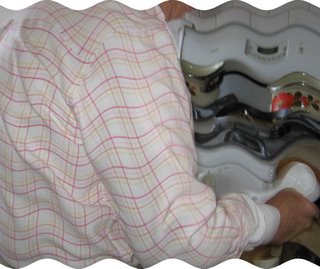 Two German companies have donated and installed 2,400 solar panels (5,000 sq meters) on the roof of the Vatican Nervi Hall where the Pope holds his weekly Wednesday audiences with pilgrims. The new Vatican solar system cost $1.6M and will produce 300 megawatt hours (MWh) of energy a year.
Two German companies have donated and installed 2,400 solar panels (5,000 sq meters) on the roof of the Vatican Nervi Hall where the Pope holds his weekly Wednesday audiences with pilgrims. The new Vatican solar system cost $1.6M and will produce 300 megawatt hours (MWh) of energy a year. But is solar power cost efficient? Is it truly green to manufacture photovoltaic cells? How much land would be needed and what would it cost to replace a typical power plant with a solar energy system?
To obtain the power rating of the Vatican solar installation, simply divide 300 MWh by the number of hours per year, e.g., (365 x 24) to obtain 0.034 MW--the power rating for the Vatican solar photovoltaic system.
To predict how many solar panels would be needed to get 1,000 MW [1 GW) of power, such as is produced by a small nuclear power plant like Wolf Creek in Kansas, solve the equation:
0.034 MW/2,400 panels = 1,000 MW/x panels.
Solving for x gives 70,588,235 panels needed to replace a single small power plant. Each installed solar panel at the Vatican costs $667, so the cost to replace a small power plant is 70,588,235 x $667 = $47,082,352,750.
The 70+ million solar panels needed to replace a single power plant will cover an area of 70,588,235 x 5,000 sq meters/2,400 panels = 147,058,823 sq meters. There are 4,047 sq meters in an acre, so dividing 147 million square meters by 4,047 sq meters gives 36,338 acres needed to replace a small power plant. At 640 acres per square mile, this represents 57 square miles of land needed to install over 70 million solar panels to replace ONE small power plant. [BTW, to replace a large power plant would require five times these values.]
"My solution to the energy crisis? Nuclear power. We already know how, it is less dirty than fossil fuel, power plants require only acres of land, not square miles and the US has all the uranium she needs inside her own borders. Forget trying to store the waste forever--settle for a century. We should also drill offshore for more domestic oil since nuclear plants can't be built overnight, and the American automobile fleet won't be all-electric for some years to come. And we can use wind and solar power where it makes sense.
"Oh, and since candidates for president can spend a hundred million dollars to get us to vote for them, maybe we can spend the same to undo the 30 years of anti-nuclear nonsense that brought us today's energy crisis in the first place." [Jeffery D. Kooistra in Alternative View, published in ANALOG: Science Fiction and Fact, January/February 2009.]









5 comments:
If every roof (engineering certified to take the added stress and strain) were to have solar panels on it, do you think we could reach this "lofty" goal of yours? I think so. But it requires people like you and me to actually think it can work. If everyone cared enough to use their roof space to de-centralise the power grid (i.e. by having some kind of solar installation on their roof) we might be getting somewhere in the climate change debate.
Everyone seems to think that there is this hard and fast line between "good" and "bad" energy sources. what we should be thinking about is alternatives that are sustainable. Is nuclear energy really sustainable?
Besides, the more we invest in renewable energy technologies, the better they will become. Sure there is a lot of scaremongering around the nuclear industry, but that doesn't change the fact that renewable energy is what is going to see us into the future as a sustainable civilisation.
besides, your calculations are incorrect. read this article...
http://www.energymatters.com.au/index.php?main_page=news_article&article_id=151
Author's calculations seem accurate. Which numbers does 'Anonymous' believe are in error (or that he/she disagrees with)?
The referenced site (Renewable Energy News) gives no data that would support or dispute the calculations of the author of this post.
"SunPower’s proprietary solar panels generate up to 50 percent more power than conventional crystalline cells. The project will also utilize SunPower® Tracker solar tracking systems at the site. Solar tracking systems follow the sun as it moves across the sky, increasing energy capture by up to 30 percent over fixed systems and consequently minimizing the amount of land and equipment needed for an installation."
No data are given, just "up to" numbers that are advertising copy. But, for the sake of argument, assume new solar panels are __ percent more efficient. Then simply reduce the number of panels and the required land area by proportionate amounts. The result is still a huge number of solar panels spread out over many square miles of land area.
For a short discussion of the hazardous emissions associated with manufacture (and disposal?) of solar panels, see http://www.livescience.com/environment/080227-solar-power-green.html.
BTW, a nuclear power plant is much cleaner. See the MIT interdisciplinary study at http://web.mit.edu/nuclearpower/
That is why solar panels go on the already underutilised roof. In a country such as Australia where we do not get snow it works well and pays for itself in 8 years of use.
hi.thanks for shedding light on such critical matters. it was really inspiring. will be looking up for more updates on the post.
Solar Racking Manufacturers
Post a Comment